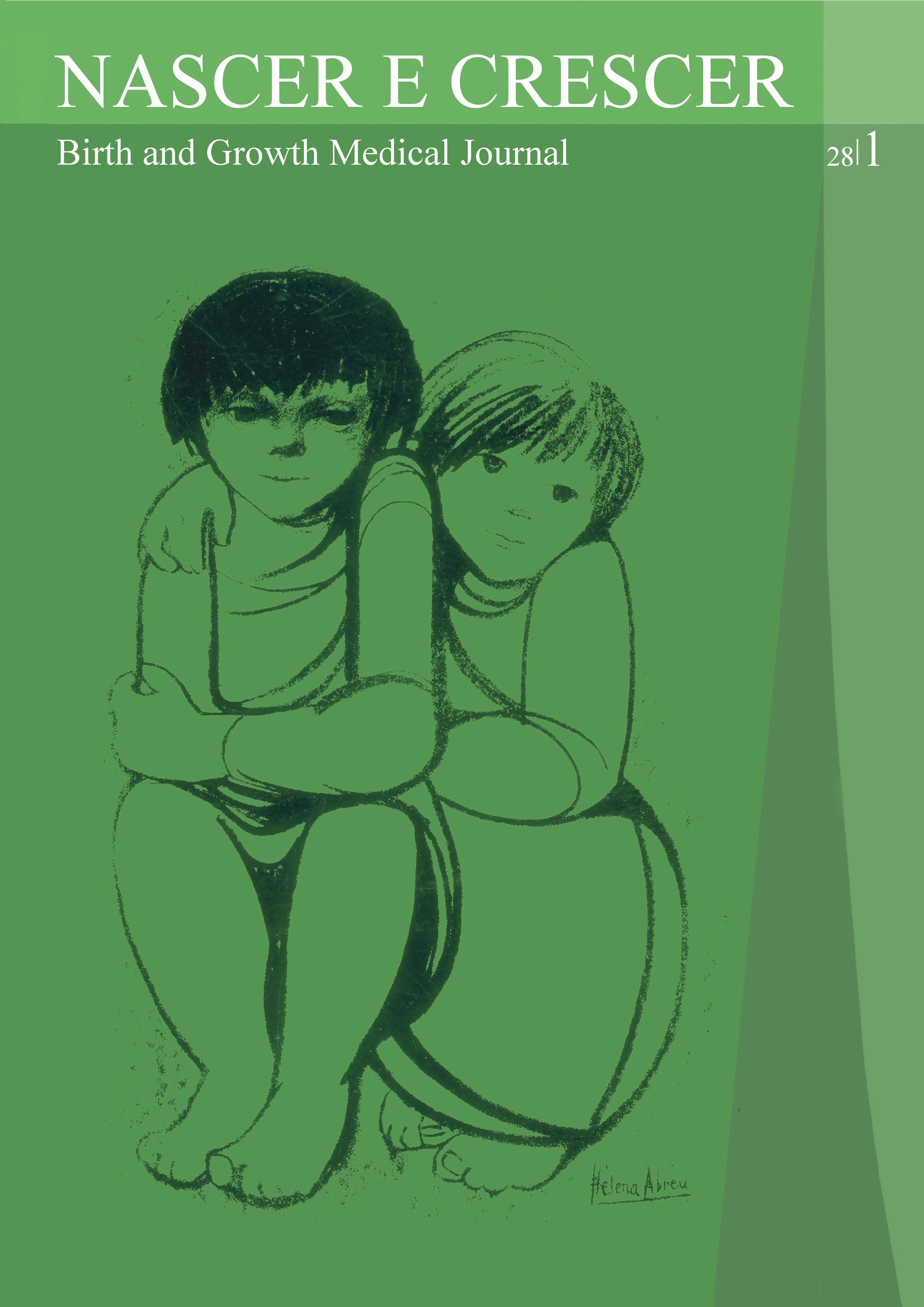Late-onset neonatal sepsis caused by group A Streptococcus - an unlikely agent
DOI:
https://doi.org/10.25753/BirthGrowthMJ.v28.i1.14558Keywords:
neonatal sepsis, Streptococcus pyogenes, streptococcal M proteinAbstract
Neonatal sepsis due to group A Streptococcus is rare and has a high associated mortality. The case of a 14-day-old female neonate who presented to the Emergency Department with feed refusal and hyporeactivity is reported. The girl was born at 36 weeks of gestation and had an unremarkable pregnancy and birth. Peripheral white blood cell count was 18.100/mm3 with 81% neutrophils, and C-reactive protein was 13.6 mg/dL. Urinalysis, cerebrospinal fluid cytochemical examination, and chest X-ray were normal. A multisensitive group A Streptococcus was isolated in the blood culture and ten-day course of ampicillin was completed. Urine and cerebrospinal fluid cultures were negative. All co-inhabitants were tested for the presence of group A Streptococcus antigen in the oropharynx, which was positive in a two-year-old cousin.
Group A Streptococcus is an uncommon neonatal sepsis agent. Transmission in the community through a carrier should be considered. This case highlights the importance of infection preventive measures for the newborn at home.
Downloads
References
- Dong Y, Speer CP. Late-onset neonatal sepsis: recent developments. Arch Dis Child Fetal Neonatal Ed. 2015; 100(3):257-63.
- Stoll B, Hansen N, Fanaroff A, Wright L, Carlo W, Ehrenkranz R et al. Late-Onset Sepsis in Very Low Birth Weight Neonates: The Experience of the NICHD Neonatal Research Network. Pediatrics. 2002; 110(2):285-291.
- Miyairi I, Berlingieri D, Protic J, Belko J. Neonatal invasive group A streptococcal disease: case report and review of the literature. Pediatr Infect Dis J. 2004;23(2):161-165.
- Verboon-Maciolek M, Krediet T, Ertbruggen I, Fleer A. Severe neonatal group A streptococcal disease. Eur J Pediatr. 2000; 59 (6): 450-452.
- World Health Organization. The Current Evidence for the Burden of Group A Streptococcal Diseases. Discussion papers on Child Health. Department of Child and Adolescent Health and Development, 2005.
- Camacho-Gonzalez A, Spearman P, Stoll B. Neonatal Infectious Diseases: Evaluation of Neonatal Sepsis. Pediatr Clin North Am. 2013; 60(2): 367–389.
- Alvarez M, Amarillo J. Neonatal invasive infection due to Streptococcus pyogenes in La Habana, Cuba. A report of 10 cases. Rev Panam Infectol. 2008; 10(1):50-53.
- Saito R, Kerr-Liddell R, Paul S. Late onset neonatal sepsis caused by group A streptococcus. Br J Hosp Med. 2017; 78(3): 170-171.
- Martic J, Mijac V, Jankovic B, Kandolf L, Vasiljevic Z, Vuksanovic J. Neonatal cellulitis and sepsis caused by group A streptococcus. Pediatr Dermatol. 2010; 27(5):528 – 530.
- Diagnóstico e Tratamento da Otite Média Aguda na Idade Pediátrica. Norma da Direção -Geral da Saúde 007/2012.
- Cohen J, Bertille N, Cohen R, Chalumeau M. Rapid antigen detection test for group A streptococcus in children with pharyngitis. Cochrane Database of Systematic Reviews. 2016.
- Downie L, Armiento R, Subhi R, Kelly J, Clifford V, Duke T. Community-acquired neonatal and infant sepsis in developing countries: efficacy of WHO’s currently recommended antibiotics - systematic review and meta-analysis. Arch Dis Child. 2013; 98:146-154.
- Fuchs A, Bielicki J, Mathur S, Sharland M, Anker JN Van Den. Antibiotic Use for Sepsis in Neonates and Children: 2016 Evidence Update. WHO-Reviews. 2016.
- Seale A, Davies M, Anampiu K, Morpeth S, Nyongesa S, Mwarumba S et al. Invasive Group A Streptococcus Infection among Children, Rural Kenya. Emerg Infect Dis. 2016; 22(2):224-232.
- Karaky N, Araj G, Tokajian S. Molecular characterization of Streptococcus pyogenes group A isolates from a tertiary hospital in Lebanon. J Med Microbiol. 2014; 63 (9):1197-1204.
- Luca-Harari B, Darenberg J, Neal S, Siljander T, Strakova L, Tanna A et al. Clinical and Microbiological Characteristics of Severe Streptococcus pyogenes Disease in Europe. J Clin Microbiol. 2009 ;47(4):1155-1165.
- Broyles L, Van Beneden C, Beall B, Facklam R, Shewmaker P, Malpiedi P et al. Population‐Based Study of Invasive Disease Due to β‐Hemolytic Streptococci of Groups Other than A and B. Clin Infect Dis. 2009; 48(6):706-712.
- McNeilly C, McMillan D. Horizontal gene transfer and recombination in Streptococcus dysgalactiae subsp. equisimilis. Front Microbiol. 2014; 5:676.
- O‘Neill S, Clarke E, Peeters Grietens K. How to protect your new-born from neonatal death: Infant feeding and medical practices in the Gambia. Women's Stud Int Forum. 2017; 60:136-143.
- World Health Organization, United Nations Children’s Fund. Caring for the newborn at home - Caring for newborns and children in the community. Geneva, Switzerland: WHO and UNICEF, 2015.
Downloads
Published
How to Cite
Issue
Section
License
Copyright and access
This journal offers immediate free access to its content, following the principle that providing free scientific knowledge to the public provides greater global democratization of knowledge.
The works are licensed under a Creative Commons Attribution Non-commercial 4.0 International license.
Nascer e Crescer – Birth and Growth Medical Journal do not charge any submission or processing fee to the articles submitted.


